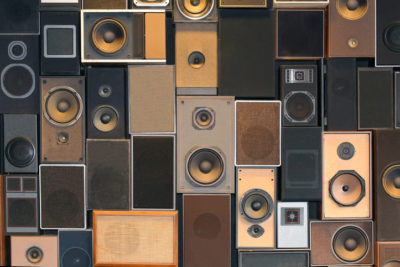Why Sonos #ListenBetter Worked
Regardless of what their specific taste may be, people are passionate about their music. Music unites people, tapping into their emotions, for richer personal expressions and deeper human connections.
Sonos has connected with that passion to make their brand about more than selling speakers. They want to use technology to help people access their music and improve the audio listening experience from the ground up. The “You Deserve Better” campaign and #ListenBetter identities elevate the brand beyond their product, imbuing the Sonos brand with a values-driven mission.
Speaker systems are a product that is particularly suited to live, experience-driven events, because the product really can’t be demonstrated or sampled any other way. Sonos has built their brand, not on in-store demos, but on live, immediate experiences, connecting their product and their mission with their audience in a direct, meaningful way. Sonos does experiential marketing every day.
In late 2016, Sonos launched the “You Deserve Better” campaign, graphically demonstrating the poor user experience and unwieldy technology of most home audio systems. This campaign culminated in a dramatic “Speaker Amnesty” experience in the heart of London where they allowed the public to trade in their current home speakers for a free Sonos system.
The Speaker Amnesty event harnessed multiple phases to increase brand awareness and drive audience engagement:
- Working with Amplify, Sonos built an enormous, eye-catching kiosk at London’s King’s Cross Station, a central and highly-trafficked area
- Radio ads and print fliers were distributed heavily in music-friendly venues, inviting people to the Speaker Amnesty
- The first 300 people in line could trade in speakers for a Sonos system. This number was high enough, and the proposition appealing enough, to motivate people to start lining up at 4:30am
- The event was unusual enough to be news-worthy, attracting attention from traditional media and giving Sonos representatives a first-hand opportunity to explain the “You Deserve Better” campaign.
- During the day, working with a local art collective, the donated speakers were transformed into an on-site art installation, shared on Instagram Stories
- Overnight, footage captured at the event was edited into a film that was projected onto the kiosk, greeting commuters the following day, and distributed socially.
- People who photographed themselves with the installation and used the #ListenBetter hashtag had a further chance to win a Sonos system.
This unique, highly visible, 3-day event harnessed traditional advertising via print and radio, traditional media, social media, and a first-hand brand experience, to reach 450K real-time commuters, create 482K owned impressions, over 1M earned impressions, and over 2K direct consumer engagements.
The Sonos Speaker Amnesty event was an incredibly impactful brand story, and just one of the ways that Sonos has made experiential marketing and #ListenBetter the heart of their company. Sonos’ mission statement makes their values clear:
At Sonos, we will listen, learn and build a community to promote and protect the future of music. We will use our business to support those confronting music under threat, and work towards making music a central part of life for everyone
Sonos has a #ListenBetter grant program, supports musical artists and activists, is a policy advocate, creates meaningful creative and advocacy partnerships in the community, and has a robust calendar of events at tech events and music festivals.
By making the Sonos brand about music, rather than about speakers, Sonos has cultivated a deeper, more meaningful relationship with their consumer, connecting with them about the things that they are passionate about, and transforming their product into something that improves a consumer’s daily experience of their music, their technology, and their home. It’s natural for such a brand to embrace experiential marketing and own it in a way that none of their competitors have yet imagined. Sonos has redefined what people expect from a home audio system, and has Amazon and Apple chasing after them.



